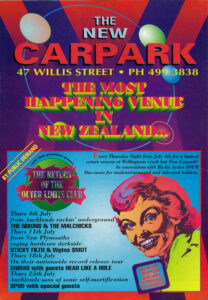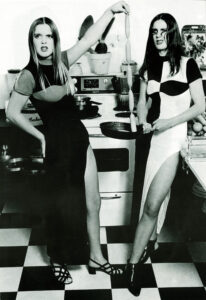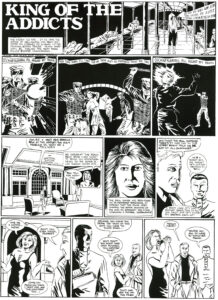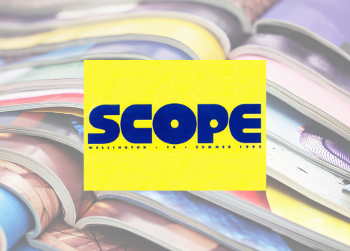Recollect now hosts the complete digitised collection of Scope, the essential guide to Wellington’s alternative scene in the early 1990s.
Scope was an alternative culture magazine published during 1991 and 1992. Often irreverent, occasionally salacious and sporting cutting-edge design, Scope attracted diverse contributors such as the writer Emily Perkins, local dance music pioneer Jason Harding (aka Clinton Smiley) and journalist John Campbell writing under his pseudonym ‘Sparky Plug’. It was founded by Mark Cubey & Michael Lockhart and published by their company Cadre Communications Ltd. Jim Scott joined the team and the trio drove the magazine forward over ten issues. Michael Lockhart was largely responsible for the magazine’s distinctive design, Jim Scott generated most of the ideas and sold advertising while Mark Cubey pulled everything together.

It arose out of Cadre’s earlier production of RAD, a promotional magazine for Wellington’s then-student radio station Radio Active. Though it was printed on glossy paper with high production values, Scope was given away as a ‘freebie’ with costs largely covered by the local businesses who advertised in it. Cadre had previously shared premises with the Capital Mac Centre, which was then the principal reseller of Apple products in Wellington. Not surprisingly, the Apple Mac desktop went on to have a significant impact on the look of the Scope. As was the case with RAD, the style of the layout designed by Lockhart was influenced by Neville Brody’s work in the 1980s UK magazines, The Face and Arena, and accomplished with the burgeoning typographic capabilities of the then-new ‘Mac’. The high-impact covers were created using the first version of Adobe Photoshop by Jeremy Jones, an employee of The Bureau, a joint venture also run by Lockhart & Cubey that focused on the production of bromides, film separations, colour laser prints and related image work for advertising agencies and other commercial clients. The combination of using full colour text and photographs on the covers resulted in digital file sizes that were sometimes so large that they crashed the processing machines.

Fashion was treated in a startlingly contemporary manner by the magazine’s principal fashion photographer, Craig Owen. He used his time at Scope to build up his portfolio and went on to became one of the most sought-after fashion photographers in Australasia until his untimely death in 2012. Jim Scott also took photos, including most of the ‘society’ photos that were a core part of the content, at venues like Clare’s and Sol Bar that were riding the new wave of ‘techno’ dance music. However, while the magazine managed to keep a regular publication schedule in 1991, advertising was hard to sell for a boutique small-run publication like Scope at a time when the NZ economy was heading into recession . Coupled with this was the time and effort required to follow-up unpaid invoices as printing costs needed to be covered.

In an effort to widen the appeal of the magazine, the March / April 1992 issue expanded to 70 pages with longer-form articles & reviews and a $3 cover price. However, sales were low and the revenue gathered was not able to cover the cost of producing the extended issue. Michael Lockhart decided to leave the enterprise at this point but Cubey & Scott persisted, returning the magazine to being a ‘freebie’ and moving it to a dramatic A3 sized format. Issue 10’s colophon described Scope as being “an occasional magazine keeping an eye on Wellington” but it turned out to be the last edition to be published. The following year, Cubey and Scott both became involved in the start-up and production of the newspaper City Voice (also digitised on Recollect). At the end of the 1990s, Cubey left City Voice and teamed up with Mikee Tucker to begin publication of the full-colour popular culture magazine, LOOP.
Wellington City Libraries wishes to thank and acknowledge the former directors of Cadre Communications for allowing us to digitise Scope on a Creative Commons basis. Special thanks go to Mark Cubey who supplied us with the original copies that were scanned for this collection and for providing information about the history of Scope used in this blog.



